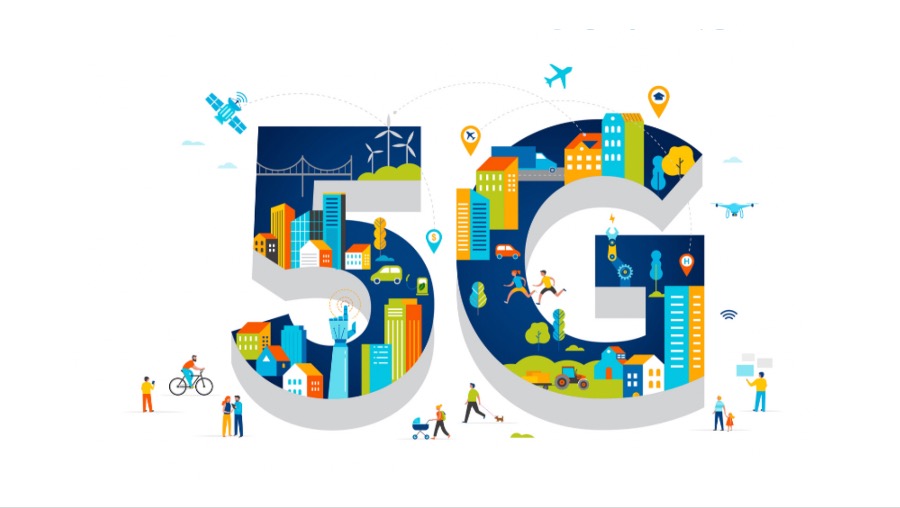
New research from SNS Telecom and IT found that annual investments in public-safety LTE and 5G network infrastructure will exceed $2.3 billion by the end of 2025.
With the commercial availability of Third Generations Partnership Project (3GPP)-standards compliant mission-critical services (MCX) including mission-critical push to talk (MCPTT), video (MCVideo) and data (MCData); high-power user equipment (HPUE), isolated operation for public safety; and other critical communications features, LTE and 5G New Radio (NR) networks are increasingly gaining recognition as an all-inclusive public-safety communications platform for the delivery of real-time video, high-resolution imagery, multimedia messaging, mobile office/field data applications, location services and mapping, situational awareness, unmanned asset control and other broadband capabilities, as well as MCPTT voice and narrowband data services provided by traditional LMR systems. Through ongoing refinements of additional standards, specifically 5G multicast-broadcast services (5GMBS), 5G NR sidelink for off-network device-to-device communications, non-terrestrial network (NTN) integration, and support for lower 5G NR bandwidths, 3GPP networks are eventually expected to be in a position to fully replace legacy LMR systems by the mid-to-late 2020s, the report said. National public-safety communications authorities in multiple countries have already expressed a willingness to complete their planned narrowband to broadband transitions within the second half of the 2020 decade.
Myriad fully dedicated, hybrid government-commercial and secure mobile virtual network operator (MVNO)/multi-operator core networks (MOCN)-based public-safety LTE and 5G-ready networks are operational or in the process of being rolled out throughout the globe. In addition to the high-profile FirstNet network, South Korea’s Safe-Net and Britain’s Emergency Services Network (ESN) nationwide public-safety broadband projects, many additional national-level programs are making considerable headway in moving from field trials to wider scale deployments, most notably, France's Radio Network of the Future (RRF), Spain's SIRDEE mission-critical broadband network, Finland's VIRVE 2.0 broadband service, Sweden's Rakel G2 secure broadband system and Hungary's EDR 2.0/3.0 broadband network. Nationwide initiatives in the pre-operational phase include but are not limited to Switzerland's Secure Mobile Broadband Communications (MSK) system, Norway's Next-Generation Nødnett (NGN), Germany's planned hybrid broadband network for German public-safety organizations (BDBOS), Japan's PS-LTE project, Australia's Public Safety Mobile Broadband (PSMB) program and Canada's national Public Safety Broadband Network (PSBN).
Other operational and planned deployments range from the Halton-Peel region PSBN in Canada's Ontario province, China's city and district-wide band 45 (1.4 GHz) LTE networks for police forces, the Royal Thai Police’s band 26 (800 MHz) LTE network, Qatar Ministry of Interior (MoI), Royal Oman Police and Nedaa's mission-critical LTE networks in the oil-rich Gulf Cooperation Council (GCC) region, Brazil's state-wide band 28 (700 MHz) networks for both civil and military police agencies, Barbados' band 14 (700 MHz) LTE-based connectivity service platform, and Zambia's 400 MHz broadband trunking system to local and regional-level private LTE networks for first responders in markets as diverse as Laos, Indonesia, the Philippines, Pakistan, Lebanon, Egypt, Kenya, Ghana, Cote D'Ivoire, Cameroon, Mali, Madagascar, Mauritius, Canary Islands, Spain, Italy, Turkey, Serbia, Argentina, Colombia, Venezuela, Bolivia, Ecuador and Trinidad & Tobago, as well as multi-domain critical communications broadband networks such as Mobile Radio Center’s (MCA) LTE-based advanced MCA digital radio system in Japan, and secure MVNO platforms in Mexico, Belgium, the Netherlands, Slovenia, Estonia and several other countries.
Even though critical public-safety-related 5G NR capabilities defined in the 3GPP's Release 17 specifications are yet to be commercialized, public-safety agencies have already begun experimenting with 5G for applications that can benefit from the technology's high-bandwidth and low-latency characteristics. For example, the Lishui Municipal Emergency Management Bureau is using private 5G slicing over China Mobile's network, portable cell sites and rapidly deployable communications vehicles as part of a disaster management and visualization system. In neighboring Taiwan, the Hsinchu City Fire Department is using an emergency response vehicle that can be rapidly deployed to disaster zones to establish high-bandwidth, low-latency emergency communications by means of a satellite-backhauled private 5G network based on Open RAN (ORAN) standards.
In addition, first responder agencies in Germany, Japan and several other markets are beginning to utilize mid-band and millimeter wave (mmWave) spectrum available for local area licensing to deploy portable and small-scale 5G non-public networks (NPNs) to support applications such as ultra-high definition video surveillance and control of unmanned firefighting vehicles, reconnaissance robots and drones. In the near future, SNS also expect to see rollouts of localized 5G NR systems for incident scene management and related use cases, potentially using up to 50 MHz of band n79 spectrum in the 4.9 GHz frequency range, which has been designated for public-safety use in multiple countries including but not limited to the United States, Canada, Australia, Malaysia and Qatar.
SNS Telecom & IT estimates that annual investments in public-safety LTE and 5G infrastructure will reach nearly $1.6 billion by the end of 2022, driven by both new build-outs and the expansion of existing dedicated, hybrid government-commercial and secure MVNO/MOCN networks. Complemented by a rapidly expanding ecosystem of public safety-grade LTE/5G devices, the market will further grow at a compound annual growth rate (CAGR) of approximately 13% between 2022 and 2025, eventually accounting for more than $2.3 Billion by the end of 2025. Despite the positive outlook, a number of significant challenges continue to plague the market. The most noticeable pain point is the lack of a D2D communications capability.
The Proximity Services (ProSe) chipset ecosystem has failed to materialize in the LTE era due to limited support from chipmakers and terminal OEMs. However, the 5G NR sidelink interface offers a clean slate opportunity to introduce direct mode, D2D communications for public-safety broadband users, as well as coverage expansion in both on-network and off-network scenarios using user equipment (UE)-to-network and UE-to-UE relays respectively. Another barrier impeding the market is the non-availability of cost-optimized commercial off-the-shelf (COTS) RAN equipment and terminals that support operation in certain frequency bands such as band 68, which has been allocated for public protection and disaster relief (PPDR) broadband systems in multiple European countries.